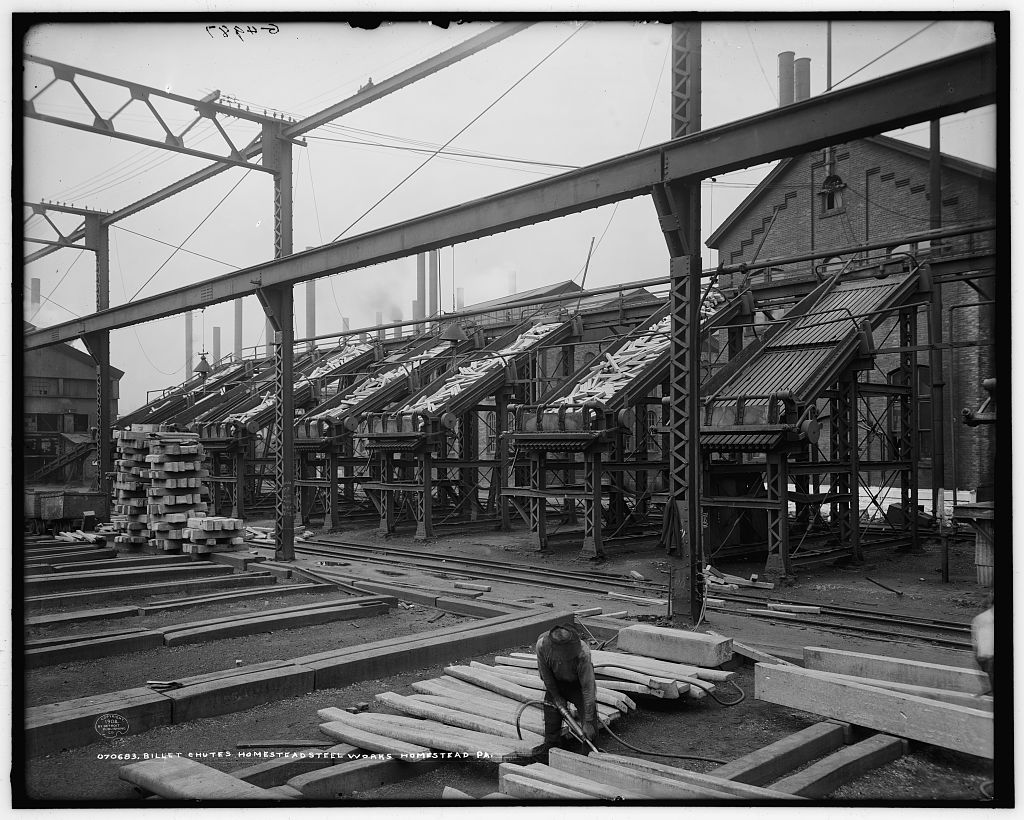1883 - Homestead Steel Works bought by Andrew Carnegie

When Andrew Carnegie purchased the Homestead Steel Works in 1883, he cemented his legacy as one of the premiere industrialists in what came to be known as the Gilded Age in American history. The Homestead Steel Works was constructed in 1881, by enterprising businessmen looking to profit off of the recent steel boom. After Carnegie’s purchase, Homestead Works became one of the most profitable plants in Carnegie’s complex, as well as one of the largest steel mills in the world until its closure in 1986. It became the flagship plant for Carnegie Steel Company, and Carnegie invested millions upgrading the plant to ensure its status and longevity.
At the time of its purchase, the Amalgamated Association of Iron and Steel Workers was already solidly established in the plant, and Carnegie ultimately took steps to eliminate the union’s influence in all of his Carnegie Steel Company facilities. While Carnegie was publicly pro union, local competition was intensifying and he felt that eliminating unions would increase company output. These policies would lead to the deadly Homestead Strike in 1892. The steel works’ history is inseparable from the strike, which became one of the deadliest labor strikes in history and changed Carnegie’s public image permanently.